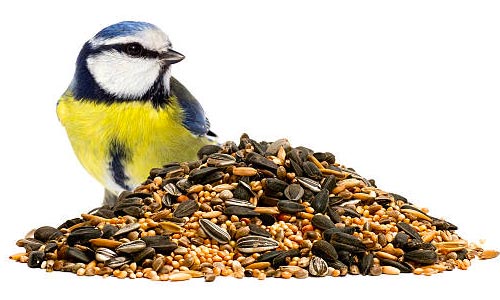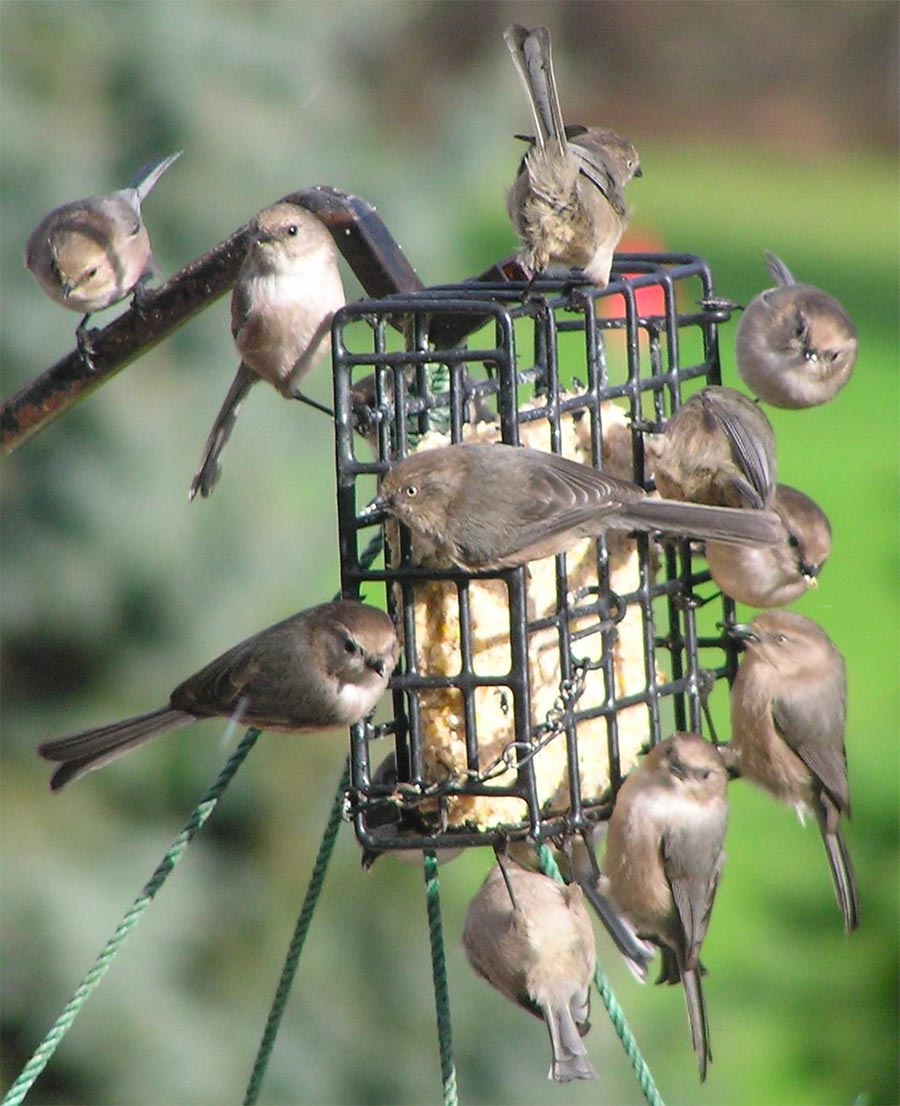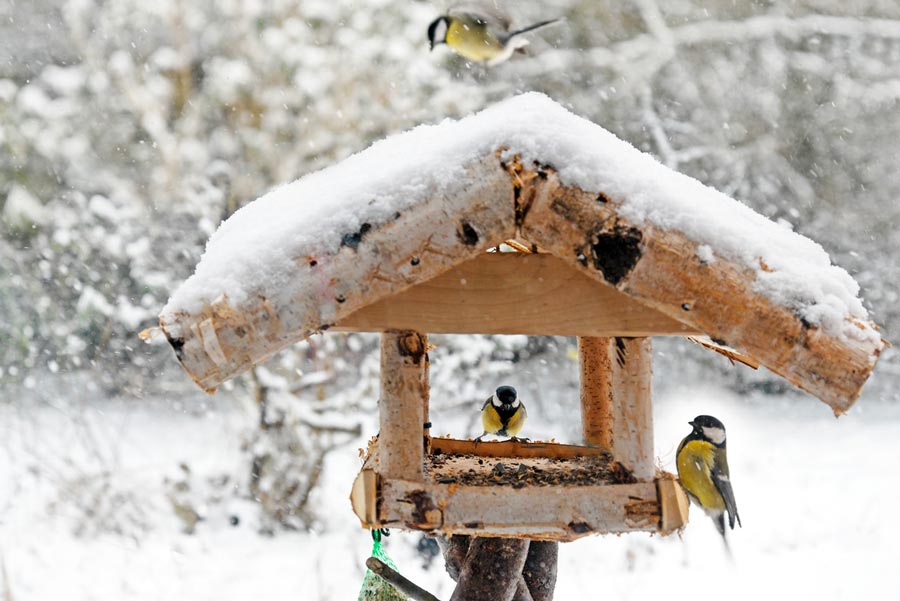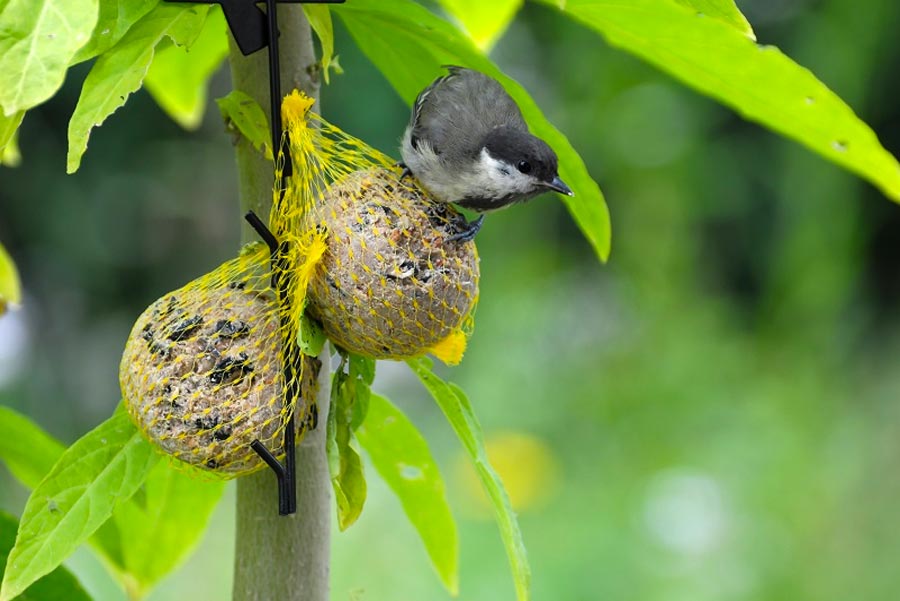The Ultimate Guide to Bird Feeding
Bird feeding is one of those things that people think is simple – “we’ll chuck a few slices of bread outside; that will do the trick”. No. No it won’t. Whilst this is the approach most people take, you could in fact be putting more birds at risk than you would by not feeding them especially if you’ve got a super accurate lawnmower that cuts grass very fine birds will be far too exposed, so let’s take a look at some of the essentials you should know if you really want to help your feathered garden friends out. Attracting birds is a crucial part of any garden but we can’t just lay out food anywhere, so here’s one good bird feeder method, creative gardening is important when looking to bring wildlife in.
When surveyed, more than 95% of the people that participated said that watching and/or listening to birds made them happier and made their garden a far nicer place to be, good for both mind and body. This information makes it fairly safe to say that we are a bird loving nation – despite the fact we don’t practice it as a hobby as much as our neighbours across the pond!
Nonetheless, things can change, and hopefully reading this essentials guide should put you on the right track to helping those garden visitors, and do check out my rearing chicken article too, as well as making us a far more recognised nation when it comes to our feathered friends.
We should admit now, that the title might be slightly misleading – explaining everything you need to know about bird feeding would take you days to read through (assuming we could piece it all together). Instead, we’re condensing it into the fundamental points which will help you feed birds safely and effectively without boring you too much.
Types of Feeding Station
The type of feeding station you have makes up just one factor that dictates how safe your birds are when they come to feed. Simply putting some breadcrumbs on the ground opens them up to being attacked by pretty much every kind of predator – this is why bird organisations advise against it. Get clever with your landscaping, you should be able to feed birds without endangering them, a certain amount of creative gardening and you can enjoy our feathered friends.

There are a variety of feeders available, varying in shape, size, looks and material in order to attract a bigger range of birds and encourage bird safety. We’ll quickly outline the types below:
- Seed feeders: These are without doubt one of the most popular type of bird feeding stations on the market simply due to the amount of food you can fill them with; it can also be extremely varied in order to create a richer diet for the birds. These will really help attract wildlife in times of drought too. Make sure you have the right feeder to suit the type of seed you want to store as some are only compatible with specific styles & models!
- Peanut feeders: Again, these vary in shape and design just like the seed feeders, but offer the ability of bigger food to be stored. However, the design will also stop the birds from swallowing the food whole, as this can lead to them choking; instead they have to peck for their food. This also has the side effect of birds staying in your garden for a longer time – it’s a win-win and would make a great gardening Mother’s Day gift as we wrote about.
- Suet feeders: This style of feeder has a very similar look to a cage as they’re usually constructed from a mesh of wires; that said, they are one of the most efficient feeders out there. The design of these feeders will allow you to fill it with suet blocks or fat balls. And if you’ve opted for the block holder; you can also put scraps, bread or toast in there as a treat!
- Feeding trays: Possibly considered one of the most alternative types of bird feeding; this consists of a tray (raised from the ground) which is often made from either wood or a type of metal and finished with a thin wire meshing on the base. This gives you the opportunity to provide food to birds that would be almost impossible to serve in a conventional type of feeder. It also offers easy clean-up at night for any uneaten food, and due to the design; rain will not make the tray overflow due to the fine meshing.
All of these feeders can usually be bought with optional protective qualities such as squirrel resistant caging or meshing. This will make it extremely hard for squirrels to get into and attack the birds; however, these are far more efficient on hanging feeders than they are on ground feeders. Squirrel protection also has the added bonus of making it hard for larger birds to get at the food, which enables the smaller, more vulnerable birds, to feed without worry. Don’t be under the illusion that anything is fully ‘squirrel proof’; if they were; chances are the small birds wouldn’t be able to get in there to feed either.
Make sure you read the ‘general tips’ at the bottom of this article in order to see where these feeders should be positioned to prevent predators snacking on your garden friends.
Feeding & Different Types of Food
Birds are those creatures that are absolutely glorious to watch and it almost breaks your heart to hear that many die in winter due to a lack of food. Now, it will come as a surprise to most, but the majority of garden birds actually rely on us [humans] to provide for them, especially throughout the winter months. Food is always plentiful in summer when we are outside eating and having barbecues.
When cold weather sets in, birds have a hard time sourcing food and they expend far more energy searching for it. This puts them into a never-ending cycle of struggle in which they’re looking for food in order to get the energy they need to find more food, not a situation you’d want to be in, right? It’s one of the things we should be preparing for when it snows.

Here’s a variety of foods that birds adore and more importantly need in order to feed themselves and their babies throughout the year:
- Seeds: Arguably one of the most popular foods simply due to the variety on offer and the benefits it provides to the birds. Seeds are ideal feeder foods as there is a lot of meat and very little shell which makes it easier for the birds to get at. As well as this, they are also considerably high in fat content which is a bonus. The most common are sunflower seeds, Niger seeds and thistle seeds; all of which attract a wide variety of birds. Remember to keep some for yourself though, it’s always good to have free planting next year!
- Mealworms: Whilst gross to most of us, mealworms can form a staple in a bird’s diet by providing them with much needed protein. They’re also the perfect food for parents to take to their little ones when they’re out searching for meals. If you’re purchasing dried mealworms, give them a quick soak before putting them out.
- Suet: Most commonly used as a term for beef fat; this is safe to be fed to birds and other animals. It’s an easily digestible source of high-energy fats that are extremely useful during the winter months. Other foods such as seeds, peanuts and even fruits can be added to a suet block to vary the food and nutrient profile on offer.
- Peanuts: These are a great source of food, providing both protein and fat all in one – however, they can also be dangerous. First off, buying from a reputable supplier is a must; second of all, do not put out roasted or salted nuts as this can lead to death if over ingested. Large nuts can present a choking risk to smaller birds (or those feeding their young), to avoid this, crush them up before putting them out.
- Fruit: Just like us, birds love a fruity treat occasionally and fruits are a great source of energy due to water content and sugar. Rather than leaving whole fruits outside, cut or slice them up (at the very least halve them) and leave them on the bird table for garden visitors to enjoy. If you have any fruit trees in your garden, try and pick up any fruit that drops and put those on tables out of the way of predators, doing this will also stop birds going to the floor for the food!
- Leftovers: Rather than chucking food you don’t want away, consider giving it the birds outside. A variety of common foods such as cheese, rice and even cereal can be left out for birds without any problem at all. Biscuits, dried fruits and other snacks are also fantastic; just make sure they’re small enough and moist. Also, avoid putting out fats from cooked meat and mouldy or out of date / spoiled food as this isn’t healthy for the birds.
There are of course other foods that birds can benefit from and enjoy, however this is just a run-down of some of the most easily available foods which can form a solid diet for a wide variety of birds.
General Tips
Here you can find a lot of simple tips that will keep birds safe and healthy – make sure you read this thoroughly otherwise you could end up doing more harm than good to your little flying buddies.
- A bird bath is nearly as important as a feeder; as it provides them with a safe drinking source, a place to add moisture to dry food and even have a bath.
- Make sure you clean bird feeders and baths often as food can quickly go mouldy and remnants of past meals can stay behind and clog them up as well as cause infections if ingested.
- Place feeders and baths in safe positions. Do not place them close to fences(here’s an article on fence replacement incase you’re thinking of it) or too near to the ground as this can let cats and squirrels attack them whilst they are feeding. Try and put them high up in open space so birds have a higher chance of spotting predators in the surroundings.
- As previously mentioned, if you’re going to offer dry food to birds, give it a quick soak in some water for 5 minutes prior to putting out. This makes dry food easier to chew and eat, whilst also providing a much needed source of moisture (especially if water sources are frozen over.
- Feeding birds milk is a big no-no. Whilst it is a good source of protein and fat for us, birds can’t digest it properly.
- If you see food on the floor, pick it up and place it in or on the appropriate feeder as this will discourage birds from feeding on the floor where they’re most vulnerable to other animals.
- If you have a cat, put a bell around its neck as this will alert the birds to its presence and avoid any unnecessary birdie deaths. If other cats (that you don’t own) continue to come into your garden, give them a friendly shoo with loud noises or a bit of water… They won’t come back in a hurry!

Do nothing at all
This might seem like a slap in the face of everything we’ve just said, but hear us out for a minute. Chances are, your garden is a prime source of food for birds in general without you having to do anything at all, especially in summer.
Rather than treating your plants with insecticides, weed-killers and other harmful sprays and treatments, let the birds do the hard-work and reap the rewards. Also, using fewer chemicals will actually promote the health of birds as they won’t be subject to eating things that have come into contact with them. If you do have to use any kind of sprays or insecticides, read the label carefully first before applying and ensure it won’t do any damage to birds or other wildlife.
Hold off on garden maintenance where possible, I’m not saying let it get overgrown though! You might be inclined to trim the hedge or a few bushes, but for all you know, a little family of birds might have nested there – how would you like it if someone just cut away a few bedrooms from your house? Put off trimming and pruning until the autumn months(preferably November, there’s plenty to do then) if you can, as most birds will have moved on by then in preparation for winter. But if you do have to drastically hack away at some shrubbery, make sure it’s nest-free before you get the garden tools out.
That just about concludes our guide and talk on the essentials of bird feeding. If you think there are any key points which we’ve missed out, please let us know by dropping a comment below and we’ll add them into the article where appropriate!
